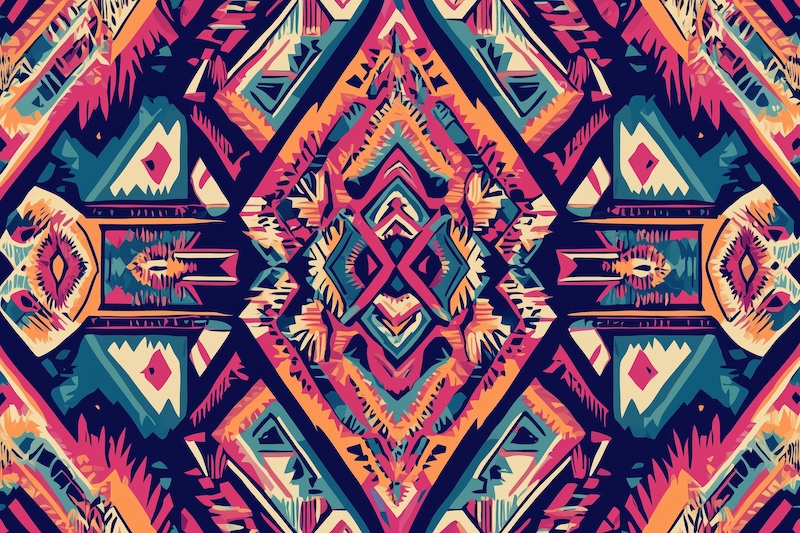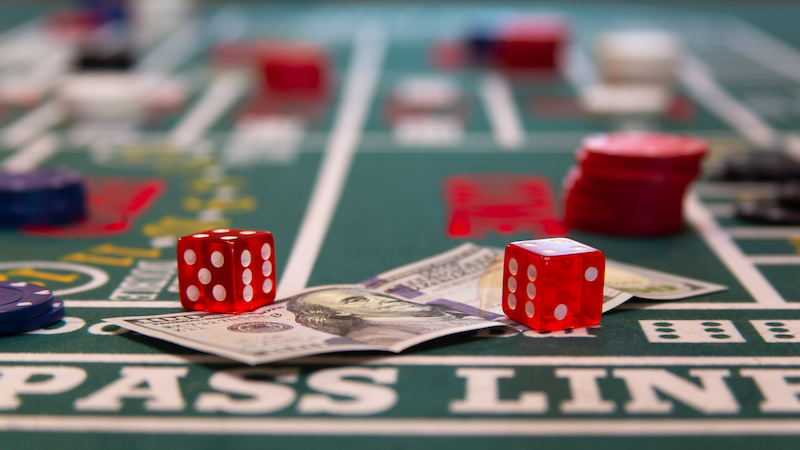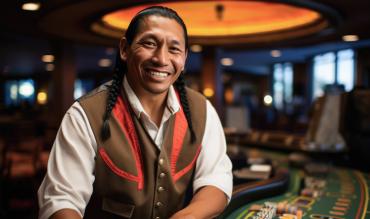When many people think about gambling, the Las Vegas Strip probably comes to mind. But casinos now can be found all across the U.S. and in other areas around the world.
However, many may not realize just how much of an impact tribal gaming makes on the industry. Tribal gaming properties can now be found throughout the U.S. and Canada and revenue helps provide many Native American (known as “First Nations” in Canada) communities with health care, infrastructure, employment, and more.
“For over four decades, Indian gaming revenues have transformed the lives of tribal citizens and their neighbors,” chairman of the Indian Gaming Association, Ernest L. Stevens, Jr., recently noted in Tribal Gaming & Hospitality magazine. “By law, tribal governments must reinvest gaming revenues into their economies, funding vital programs and services in education, healthcare, public safety, and infrastructure programs and services. This revenue also empowers tribes to exercise their sovereignty and uphold their treaty rights in a way that amplifies our voices.”
The economic benefits carry over to other communities as well, with many non-tribal members finding jobs in these casinos. Keep reading to learn more about the American and Canadian tribal gaming history and operations.
Quick History of Native American Casinos
The history of Native American casinos began by simply offering bingo for those wishing to spend a buck with a chance to win a jackpot. Some properties even began offering high-stakes bingo, with some real eye-popping payouts.
According to David Schwartz's exhaustive history book on gambling, Roll the Bones, the Penobscot Indians of Maine and the Seminoles of Florida were the first tribes to begin offering the game in the 1970s. More tribes followed this trend in the 1980s, including Oklahoma.
“In 1975, the Indian Self-Determination and Education Assistance Act supported and reinforced tribal governments,” according to the Oklahoma Historical Society’s Encyclopedia of Oklahoma History and Culture. “As a result … American Indians in Oklahoma formed 39 tribal governments that have been federally recognized. These nations exercise powers of self-government, including business councils, and many have tribal courts with law enforcement.”
Gaming became a key economic driver for tribes throughout the U.S. The Indian Gaming Regulatory Act (IGRA) was then passed in 1988, setting the stage for Native American casinos to expand beyond bingo.
Many of these properties are now massive resorts with slot machines, table games like blackjack and craps, entertainment venues, hotels, and more. Some of these tribes have even moved into online gaming in recent years as well.
Tribal gaming operations have become major companies and have even expanded beyond traditional tribal lands over the last few years. For example, Hard Rock International, owned by the Seminole tribe of Florida, acquired the Mirage Hotel & Casino in Las Vegas from MGM Resorts in January 2023 for $1.1 billion.
The Seminoles now are redeveloping the property and will own a casino right on the famed Las Vegas Strip. This isn’t the only tribe operating a Native American casino in Sin City. The San Manuel Band of Mission Indians purchased the Palms Casino Resort in 2021 and reopened it in 2022 after some major renovations.

How Many Native American Casinos are There in the U.S.?
Native American casinos have now expanded into all parts of the U.S., even opening in some areas where traditional commercial casinos aren’t legal, such as in Texas. In total, there were 537 tribal casinos across the country as of 2024, according to the National Indian Gaming Commission.
Of the nation's 574 federally-recognized tribes, 245 operate casinos and gaming enterprises. These tribes have gaming operations in 29 of the 50 U.S. states. Nine of the 10 largest casinos are owned by Native American tribes.
Because tribes are seen as sovereign nations within the U.S., these groups negotiate gaming compacts with state governments, spelling out the minimum age to gamble, games that are allowed, taxes, regulations, and other specifics.
Oklahoma stands out as the state with the most tribal casinos at139, followed by California with 66. The number of tribal gaming properties continues to grow as tribes expand their operations and other Native American groups enter the casino business.
Tribal Casinos Bring in Big Bucks for Their Communities
Tribal gaming continues to be a major part of the American casino industry and that has been exemplified by the industry’s growing revenue numbers in recent years.
In February, the American Gaming Association (AGA) and the Indian Gaming Association (IGA) teamed up to offer insight on the industry with the results of the AGA’s 2024 Commercial Gaming Revenue Tracker. Revenue from commercial casinos reached $71.92 billion, a 7.5% increase from 2023.
Total casino revenue, commercial and tribal, reached $115 billion. Native American casino gaming added a huge chunk to that total. IGA executive director Jason Giles also reported that tribal gaming brought in more than $42 billion in 2024, an increase of 2.6% from $40.9 billion in 2023.
“These revenues are directly returned to our tribal communities and tribal citizens, not investors or shareholders,” Giles said. “The use of these revenues goes directly to the health and welfare of our tribal citizens on the reservation.”
These casinos also employ many tribal members and other Americans as well, estimated to as many as 600,000 people around the country, including direct and indirect employment.
Canadian Tribal Casinos
The U.S. isn’t the only North American country where tribal casino operations are thriving. In Canada, there are 17 First Nation casinos with six in Saskatchewan, five in Alberta, three in Ontario, two in Manitoba, and one in British Columbia.
Statistics aren't as readily available in Canada for overall revenue, but some have estimated that the industry brings in $1 billion annually.
Some operations divide gaming revenues among other tribes. For example, the Saskatchewan Indian Gaming Authority (SIGA) is one of the more successful tribal gaming groups in the country. SIGA distributed to 72 First Nations in the province, providing essential funding for services within these communities.
If this article interests you, explore other topics like blackjack strategy, roulette strategy, and craps strategy.

What Can You Expect at a Native American Casinos?
Visitors to a Native American casino will usually find an experience very similar to what they’d find on a trip to a commercial casino. These can be large operations with some of the great slots and games gamblers have come to expect in places like Las Vegas in Atlantic City.
These properties can award massive slot machine jackpots and major entertainment venues. Some tribes, such as the Seminoles of Florida and Choctaw of Oklahoma, have made a major statement in the world of poker over the last decade.
These properties host some of the largest tournaments in the industry, including the World Series of Poker Circuit and World Poker Tour regularly stopping at the properties.
Other tribes even own horse tracks, expanding their wagering operations into racing. For example, the Muckleshoot tribe owns Emerald Downs in Auburn, Washington, and the Cherokee Nation owns Will Rogers Downs in Claremore, Oklahoma. The Seminole tribe has even branched into online sports betting operations through its Hard Rock brand in Florida and several other states.
Native American and First Nations casino operations continue to grow and make a major impact on both the U.S. and Canadian economies.


